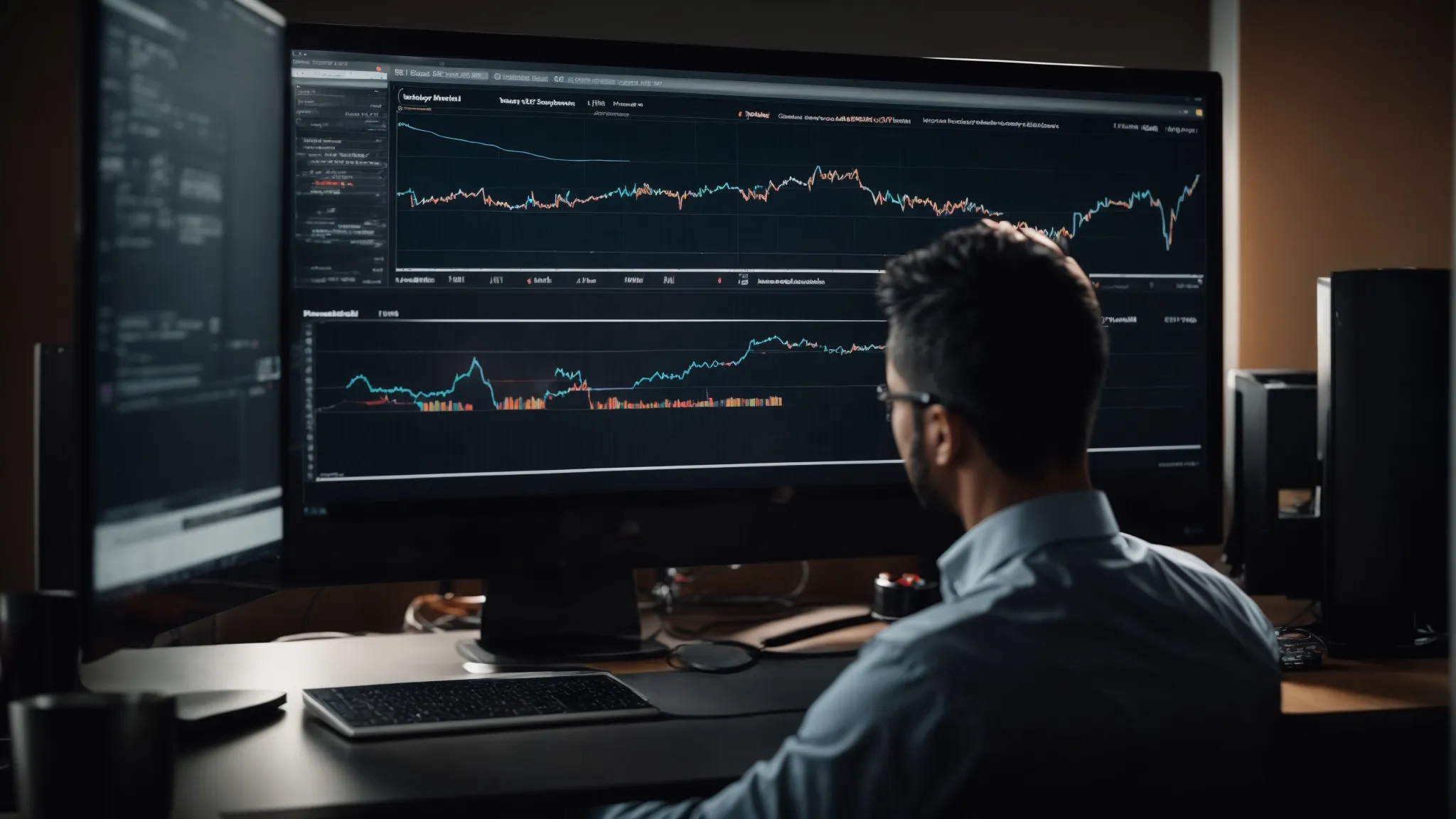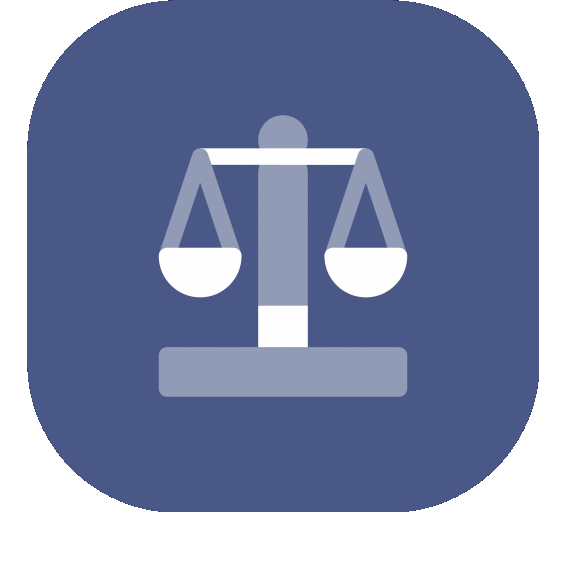Google Algorithm Updates
Understanding the Latest Google Algorithm Updates In an ever-evolving landscape, website owners and SEO experts constantly find themselves at the mercy of Google’s algorithm whims. The latest […]
Understanding the Latest Google Algorithm Updates
In an ever-evolving landscape, website owners and SEO experts constantly find themselves at the mercy of Google’s algorithm whims.
The latest round of changes brings profound effects on search rankings, stirring the SEO community into action.
These algorithm updates, from the experience-influencing page update to the nuanced adjustments in review algorithms, are critical for any marketer to understand and adapt to effectively.
LinkGraph’s SEO services stand poised to help navigate these shifts, turning the complexity of updates into opportunities for improved visibility and user engagement.
Keep reading to uncover how your site can remain resilient and thriving amidst the SEO tides.
Key Takeaways
- Google’s Algorithm Updates Critically Impact Search Rankings and Demand a Reevaluation of SEO Strategies
- LinkGraph Provides SEO Services That Help Navigate Algorithmic Changes and Optimize Content for User Experience
- Authentic, High-Quality Content Is Increasingly Important in Response to Updates Like Google’s Helpful Content Update
- Google’s Review Algorithm Update Emphasizes the Importance of Genuine Customer Reviews for Search Rankings
- Continuous Adaptation and Robust Analytics Are Key to Maintaining Visibility in Light of Frequent Algorithm Updates
Tracing the Impact of Recent Google Algorithm Changes

In the swiftly evolving landscape of search engine optimization, website owners confront the relentless wave of Google algorithm updates, which recalibrate the playing field with each release.
Search algorithms underpinning the search engine results page undergo meticulous refinement, often targeting components integral to search rankings, user experience, and content relevance.
Professionals in the SEO community devote attention to these updates, keen on identifying the multitude of factors affected.
The recent changes yield a terrain ripe for study, with industry experts scrutinizing the variations in search results, dissecting the fortunes of websites pre and post-update, and evaluating website performance against an array of ranking factors postulated by these latest computational adjustments.
Identifying Key Factors Influenced by the Updates
Amidst the constant shifts in the SEO landscape, discerning site owners analyze the impact of algorithm updates on search result standings. Notably, the Google search ranking algorithm update—encompassing signals ranging from user engagement metrics to content originality—can lead to palpable fluctuations in a website’s ranking.
The advent of new ranking elements like “passage ranking” and updates to pre-existing systems such as BERT necessitate a fresh appraisal of SEO strategies. Incremental changes signal a need to emphasize high-quality review content and the avoidance of disruptive interstitials:
- Increased weight on user-focused content through the recent Helpful Content Update.
- The introduction of MUM technology refines the ability to understand and rank complex queries.
- Elevation in the importance of page experience, especially with the Page Experience Update on the horizon.
Analyzing Search Results Before and After the Updates
With each algorithm update, the SEO expert painstakingly tracks the undulations in keyword rankings. Assessing the terrain before and after these Google core updates reveals shifts in SERP positioning, spotlighting the winners and those who must embark on recovery efforts.
Painstaking Scrutiny of SERPs post-update unmasks patterns and provides insights into the evolving search algorithms. Dissecting these outcomes, experts offer guidance, ensuring that site owners can align with the best practices endorsed by Google Search Central.
- Assessment of fluctuations in search rankings highlights the influence of core updates.
- Detection of variations in user experience metrics post core algorithm update underscores its weight as a ranking factor.
- Analysis of content quality before and after the Helpful Content Update identifies shifts in emphasis on user benefit.
Measuring the Performance of Websites Post-Updates
Consequent to Google’s core updates, the landscape for SEO and website performance undergoes a Meticulous Process of Observation and Adjustment. Marketers and webmasters gauge site metrics, observing the ebb and flow of traffic and user engagement to navigate the temporal aftereffects of each update.
LinkGraph adeptly employs SEO Services with a forensic approach to data analysis, enhancing insight into the trajectory of a site’s search rankings post-update. This approach offers invaluable guidance for those aiming to calibrate their SEO strategies in sync with the latest developments wrought by Google’s algorithm refinements:
| Update | Impact on Rankings | User Experience Metrics | Content Quality Adaptations |
|---|---|---|---|
| Core Algorithm Update | Notable shifts in SERP rankings | Significant as a ranking factor | Imperative revision in tandem with Page Experience metrics |
| Helpful Content Update | Surge for user-first content | Enhanced emphasis on beneficial, informative material | Rigorous assessment to meet updated helpfulness criteria |
The adept application of LinkGraph’s SEO services, supplemented by the Robust Capabilities of the Search Atlas SEO Tool, positions website owners to respond proactively to Google’s algorithmic tectonics. Companies are thus empowered to refine their digital presence, ensuring continued alignment with the evolving tenets of SEO google and user expectations.
How the Latest Google Updates Shape SEO Strategies

In a persistent quest to refine their platform’s user experience, Google’s algorithm adjustments necessitate a reevaluation of SEO methodologies, compelling industry professionals to transform their approaches to ranking in the search engine results page.
These changes, including the notable core update, exert substantial influence on the organic search landscape, prompting a need for businesses to revisit their content creation principles, tailor on-page optimization tactics, and adjust their technical SEO strategies.
By staying attuned to Google’s evolving guidelines, SEO services such as those offered by LinkGraph act as pivotal resources for brands to maintain their competitive edge and cater to the intricate demands of the search algorithms.
Revising Content Creation Principles
In light of recent Google algorithm changes, content creators must pivot, favoring substance over volume. This shift demands a strategic overhaul prioritizing depth, accuracy, and relevance, thereby providing value to the user and adhering to the updated standards set forth by search engine authorities.
LinkGraph’s astute guidance in Content Optimization Reflects an Understanding that algorithm updates like BERT and MUM have fundamentally altered the mechanics of content evaluation. Content must now exhibit a keen alignment with natural language processing (NLP) and user-centricity to perform well in the ever-dynamic search engine results page.
Adapting on-Page Optimization Tactics
In response to the nuanced refinements introduced by Google’s search algorithms, such as recent core algorithm updates, site owners are prompted to fine-tune their on-page optimization tactics. LinkGraph Helps Customers Rise to this challenge, providing SEO services that optimize title tags, meta descriptions, and headers with precision, ensuring they resonate with Google’s intent for relevance and user-focused content.
Concurrently, adherence to the detailed nuances of semantic search has become ever more critical. LinkGraph capitalizes on this by enhancing keyword optimization strategies, not merely for search engine cognizance but to elevate the Content’s Contextual Relevance, a factor of growing importance following the latest updates to Google’s search algorithms.
Adjusting Technical SEO in Response to New Guidelines
As Google algorithms grow in sophistication, with the release of updates like the Core Algorithm Update, technical SEO requires meticulous attention to conform to the new protocols. LinkGraph’s SEO services empower website owners to navigate these intricate adjustments, facilitating technical enhancements that align with the freshest directives on crawlability and indexation issued by search engine adjudicators.
LinkGraph focuses on maximizing site performance and user experience, two aspects scrutinized by the latest Google updates, optimizing website speed, and ensuring mobile-responsiveness. This proactive stance towards technical SEO fortifies a site’s infrastructure, making it robust in the face of algorithmic shifts and maintaining its visibility in an unpredictable search results landscape.
Breaking Down the Objectives of Google’s Latest Updates

The continuous endeavor to refine search engine efficiency and relevance through Google algorithm updates has fostered a landscape where the dynamics of SEO strategy are at the mercy of evolving standards.
These regular algorithmic adjustments serve definitive objectives, honing the quality of the digital experience for users across the globe.
Specifically, the recent spate of updates concentrates on enriching the user’s interaction with search engines by strengthening the focus on user experience, demanding web pages deliver not only high-quality and informative content but also uphold the importance of website security and mobile optimization.
Each strategic shift underlines Google’s commitment to creating a safer, more accessible, and user-centric web environment.
Strengthening the Focus on User Experience
Google’s algorithmic advancements reflect a commitment to enhancing user experience as a cornerstone of search engine optimization. The incorporation of page experience signals into the core algorithm stipulates that website owners prioritize not only the information provided but also the manner in which users interact with their web pages. LinkGraph’s SEO services embody this ethos, assisting clients in Crafting a Website Journey that is seamless, user-friendly, and conducive to maintaining enviable search rankings.
Recent updates have cemented user experience as a significant ranking factor within Google’s search algorithms, underlining the importance of responsive design, swift loading times, and the elimination of intrusive interstitials. This renewed emphasis ensures that sites that offer an exemplary user journey stand rewarded, positioning them more prominently in search results. LinkGraph’s proficiency in this domain guides site owners through the nuances of creating a web experience that resonates well with both users and the algorithm.
Encouraging High-Quality, Informative Content
In the maelstrom of search engine strategies, Google’s algorithm advances consistently foster a push towards quality and information-rich content. Reflecting on the necessities of today’s informed audience, these updates place a premium on depth and factual accuracy, prompting creators to produce material that transcends superficial knowledge and truly informs.
| Updates | Content Relevance | Audience Engagement |
|---|---|---|
| Product Review Update | Elevated criteria for in-depth analysis | Incentives for creating engaging, expert reviews |
| Helpful Content Update | Preference for user-centric, actionable insights | Improved ranking for content fulfilling search intent |
The precision of Google’s algorithm can be compared to an unerring compass pointing towards the true north of user value: helpfulness, expertise, and reliability. These elements define the scaffold upon which high-ranking content is now built, underscoring LinkGraph’s commitment to delivering SEO services that satisfy the insatiable quest for knowledgeable content that both the user and search engine demand.
Promoting Website Security and Mobile Optimization
Google’s vigilant approach to algorithm updates frequently underscores the significance of website security, a critical aspect that serves as both a protective measure for users and a ranking signal for search engines. By emphasizing secure protocols like HTTPS, LinkGraph stays at the forefront, ensuring its clientele’s websites are fortified against threats and valued higher by the algorithms for their security measures.
Additionally, with the ubiquitous nature of smartphones, Google’s algorithmic updates increasingly prioritize mobile optimization, recognizing its role in providing an optimal user experience. This focus aligns with LinkGraph’s offerings, delivering SEO services that ensure websites are not only mobile-friendly but also structured to enhance usability for on-the-go access, thus meeting Google’s rigorous standards for mobile optimization.
Diving Into the Details of Google’s Core Updates

In an era where the digital landscape is perpetually influenced by the whims of search algorithm refinements, Google’s core updates emerge as pivotal episodes that cast a long shadow over the digital strategies of countless businesses.
These comprehensive algorithm updates function as lynchpins in defining the success or pitfalls of online visibility.
An in-depth analysis of the core updates is indispensable for a nuanced understanding of their significance, the myriad facets they alter, and the strategic measures required for firms to emerge unscathed—or indeed bolstered—when rankings are recalibrated.
As such, uncovering the intricacies of these updates is a critical endeavor for SEO professionals and site owners who must steer their online presence through sometimes tumultuous seas of change.
Understanding the Significance of Core Updates
The hallmark of Google’s core updates lies in their profound impact on the ecosystem of online search. Core updates are Google’s way of enhancing its search algorithm to better understand user queries, deliver relevant search results, and reward websites that offer superior user experiences and valuable content.
Core updates can result in substantial shifts in website search rankings, underscoring their critical role in the strategy of SEO professionals and marketers. These updates often reflect underlying trends in user behavior and signal Google’s ongoing effort to improve search quality and relevance:
- Adaptation to evolving user search patterns and expectations.
- Emphasis on delivering a more accurate, content-rich search experience.
- Adjustment of websites to meet new guidelines for ranking success.
Examining the Components Affected by Core Updates
With the implementation of core updates, Google recalibrates its search engine to sharpen the precision of search query results, catering to the user’s intent more effectively. These core updates commonly touch upon myriad elements such as content quality, site architecture, and user engagement signals, all of which are meticulously scrutinized to ensure that the user finds the most authoritative and relevant information available.
LinkGraph, through its comprehensive SEO services, addresses these adjustments head-on by optimizing client websites to satisfy the stringent criteria set by Google’s algorithm updates. This meticulous attention to site health, from enhancing content authority to streamlining user pathways, ensures that each website remains competitive and visible in the search engine rankings, even amidst the ebb and flow of core update effects.
Strategies for Recovery if Negatively Impacted
When a site succumbs to the unfavorable side of a core update, LinkGraph provides a road map for recovery, underpinned by a rigorous assessment and iterative refinement of website elements. The strategy focuses on identifying and addressing the specific factors that may have triggered the drop, applying granular improvements to content quality, user engagement, and technical performance.
LinkGraph assists clients in reestablishing their search rankings by realigning with Google’s updated criteria through thorough audits, strategic content enhancements, and optimization of the site’s overarching user experience. This tailored approach fosters a resurgence in search performance, steering the website back to a trajectory of growth and visibility within Google’s search engine results landscape.
Leveraging Google’s Helpful Content Update for Better Visibility

The swiftly changing parameters of Google’s search algorithm require an agile approach to content creation and site optimization, where understanding the latest ‘Helpful Content Update’ becomes crucial for website visibility.
This initiative by Google places unwavering emphasis on content that serves the user’s needs, mandating site owners and content creators to reorient their strategies towards producing genuinely user-centric material.
As site owners unravel the specifics of what constitutes ‘helpful content,’ it is imperative to develop content that not only resonates with the audience but also aligns with Google’s enhanced guidelines.
This section will delve into the anatomy of content deemed helpful by Google, share actionable tips for crafting content with the user in mind, and explore strategies for tracking user engagement and content efficacy in the digital ecosystem where user satisfaction is paramount.
Learning What Defines ‘Helpful Content’ by Google’s Standards
To meet the criteria set by Google’s Helpful Content Update, content must transcend the boundaries of algorithmic appeasement and center on delivering practical value to the user. This norm stipulates that material should resolve the user’s query comprehensively and enhance their knowledge or proficiency regarding the topic at hand.
Google champions content that is devised with depth and insight, steering clear of superficiality. The emphasis is on fostering an authentic connection with the audience by crafting content that aligns with their interests and demands, while also staying true to the core subject matter expertise of the site owner.
Tips for Creating and Publishing User-Centric Content
To create content that adheres to Google’s Helpful Content Update, website owners must prioritize the utility and satisfaction of their audience above all else. This involves generating materials that answer questions fully, provide unique insights or practical solutions, and maintain a high standard of expertise and trustworthiness.
| Aspect of User-Centric Content | Considerations for Creation | Impact on Visibility |
|---|---|---|
| Relevance and Completeness | Ensure all content directly addresses the user’s search intent and provides a comprehensive resource. | Increases the likelihood of higher ranking due to user engagement and time spent on page. |
| Expertise and Trustworthiness | Incorporate authoritative sources and clear expertise to build trust with the audience. | Positions the website as a credible source, encouraging backlinks and shares. |
Furthermore, site owners should consistently publish content with a clear understanding of their audience’s evolving interests and concerns. It’s essential to engage with user feedback and search queries, using these inputs to inform and shape content that aligns closely with the user’s current and emerging needs, thereby enhancing the site’s relevance and authority in Google’s eyes.
Monitoring Content Performance and User Engagement
Continuous monitoring of content performance and user engagement is critical in discerning the effectiveness of a website’s offerings. LinkGraph’s precise analytics capabilities play a pivotal role in identifying how users interact with content, enabling site owners to fine-tune their pages according to user behavior and preferences as informed by Google’s search algorithms.
Tracking engagement metrics such as bounce rate, dwell time, and conversion rates informs the necessary adjustments for content optimization. LinkGraph’s expertise in SEO services equips website owners with the tools to interpret these metrics, ensuring content not only aligns with the Helpful Content Update but also captivates and retains the targeted audience.

In an online marketplace where credibility is currency, Google’s Review Algorithm Update serves as a critical pivot towards authenticity in customer feedback.
This recent development in Google’s suite of updates demands heightened scrutiny from businesses, obliging them to foster genuine review practices, meticulously manage their reputation, and avoid practices that might incur penalties.
Adopting an analytical lens, this section prepares site owners to navigate the update’s complexities, providing proactive strategies to cultivate trustworthy reviews and the optimal management thereof, thereby preserving their standing in the search engine’s calibrated gaze.
Understanding the Emphasis on Authentic Reviews
Google’s Review Algorithm Update places a premium on the veracity of reviews, aligning closely with consumer desires for transparency and trust. This enhanced focus ensures that only genuine, quality reviews influence search rankings, thus rewarding sites that facilitate authentic feedback from their customers.
By prioritizing authenticity, Google incentivizes website owners to cultivate an environment where real customer experiences are at the forefront. LinkGraph’s comprehensive SEO services support businesses in navigating this paradigm, promoting a credible review system that aligns with Google’s algorithmic expectations for honest and informative user-generated content.
Implementing Best Practices for Review Management
Embracing transparency in review management is non-negotiable for businesses aiming to align with Google’s Review Algorithm Update. LinkGraph aids companies in establishing robust procedures for amassing and displaying customer assessments, ensuring that all feedback – positive or negative – is acknowledged and utilized to bolster credibility and search result standing.
LinkGraph’s strategic approach to review management enhances the integrity of review content, assisting businesses in moderating and responding to customer testimonials in a manner that reflects authenticity. This principled response to user-generated content not only secures customer trust but also solidifies a brand’s reputation within Google’s algorithmic framework, driving organic visibility.
Avoiding the Pitfalls That Lead to Penalties From the Update
Avoiding the repercussions of Google’s Review Algorithm Update requires a vigilant adherence to ethical review practices. To prevent the imposition of penalties, businesses must resist the temptation to solicit or fabricate testimonials, ensuring that the feedback published is a genuine reflection of customer experiences.
LinkGraph’s guidance becomes indispensable, steering website owners away from black-hat techniques that might skew review legitimacy. As Google’s algorithmic eyes grow ever keener, maintaining an organic, unmanipulated reviews landscape secures not only the integrity of a business but also its rankings in the search engine results page.
Conclusion
Understanding the latest Google Algorithm Updates is crucial for SEO success in the dynamic online search landscape.
As Google continuously refines its algorithms, these updates profoundly influence website rankings and user experience standards.
By staying informed of changes such as the Core Algorithm Update, the Helpful Content Update, and the Review Algorithm Update, SEO professionals and site owners can adapt their strategies to align with Google’s focus on user engagement, content quality, and authenticity.
Employing SEO services like LinkGraph’s, which adeptly navigate Google’s evolving guidelines, ensures that content remains user-centric, technical SEO meets new requirements, and review practices are genuine—ultimately maintaining and enhancing a website’s visibility and competitive edge in search results.















































































